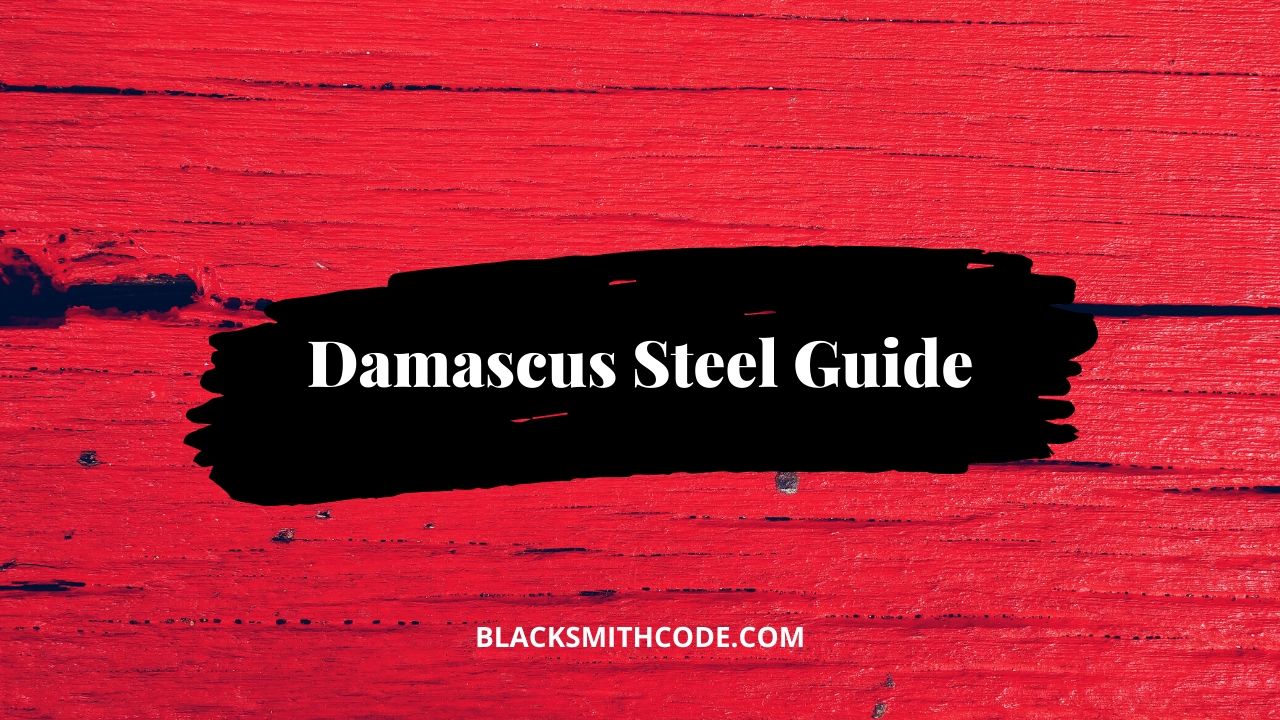Cast damascus steel is an ancient steel that was used in the east and the middle east before it expanded to the rest of the world. The swirling pattern on the blade is what makes it so unique.
Two or more steel alloys are forged together to obtained this artistic look. Apart from the aesthetics, the weapons that were formed by using this technique were far more superior than the ones made by iron.
The might of these swords and daggers was witnessed by western Europe in the Crusades of the 11th Century. The exceptional hardness and sharpness of the blade gave the Arab warriors the upper edge.
Cast Damascus Steel
The ancient technique of casting Damascus steel has been lost for centuries. Damascus steel was cast from wootz, a type of steel that was initially found in India, Persia, and Sri Lanka thousands of years ago.
Under particular temperatures, the steel absorbed the carbon from the burning charcoal. Further, the impurities like tungsten and vanadium gave rise to the watery patterns. The traditional Indian smelting process was used to combine various layers of metals.
Modern Damascus steel
Well, if anyone claims to be forging the original wootz steel, he/she is either a time traveler or just crazy. The contemporary technique involves welding several layers of steel, including a high carbon layer, to toughen the steel.
High carbon steel and low-temperature forging are neccessary for Damascus steel casting.
Quick Note
These layers are forged together by hammering them at high temperatures, thus creating a forge weld. The stacked layers are twisted, folded, and welded together. Further, quench the steel to harden the structure and hammered again to flatten the billet.
Thus the sheets are sandwiched with each other creating a unique pattern.
Every cast Damascus steel blade is unique and handcrafted.
How Durable Is the Damascus steel?
Damascus steel is very sturdy, ductile, and powerfully built. Damascus knives are very famous for being sharp and resistant to shattering. As far as rust/corrosion resistance is concerned, it depends on which steel alloys were combined.
Low carbon cast Damascus steel can be harder than stainless steel, but if you are using a high carbon Damascus steel knives, make sure it is clean and oiled regularly to avoid rusting.
How to Care for Damascus Steel?
If you are using a Damascus steel knife, you must clean it after every use. Why? Any organic material that can contribute to rusting must be removed from the surface.
Even if you are using a high carbon blade, the knife should be adequately dried before storing it away. Excessive water can lead to oxidizing, which contributes to rusting. As mentioned earlier, the blade can be oiled to avoid such issues.
Pro Tip
Stainless Damascus steel is much better than the other variants. A combination of VG10 and VG2 stainless steel gives you a razor-sharp blade that is waterproof and easier to maintain.
Conclusion
The modern cast Damascus steel is not what was forged by our forefathers. However, the use of multiple layers of different steel alloys gives you a watery artistic pattern and a durable metal piece.
So, if you are planning on making a beautiful dagger or an attractive metal craft for the next art show, don’t forget to use this pattern-welded steel.

